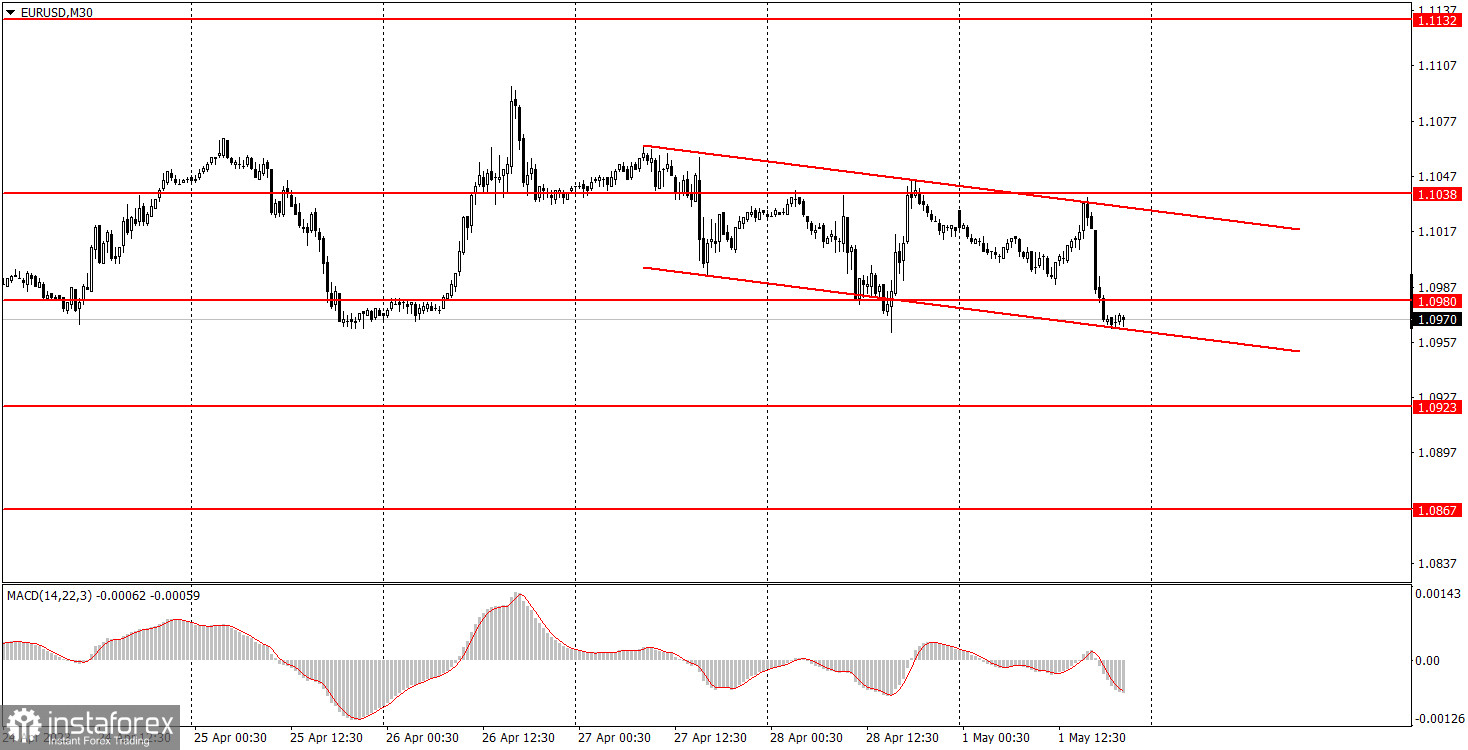Analysis of macroeconomic reports:

There will be quite a lot of macro data on Tuesday. First, a report on retail sales in Germany, which has the lowest significance for the market. Most likely, the reaction to it will be minimal or none at all. Next, the UK Manufacturing PMI for April. Take note that PMIs are quite important for the British pound, but as always, the actual value must differ from the forecast value to see a market reaction. Most likely, the index will fall even further, so the pound may also decline on Tuesday morning.
Then, the important reports will be published. Eurozone inflation for April will be of great importance ahead of the European Central Bank meeting, the results of which will be announced on Thursday. If inflation (as forecasted) rises to 7% or remains at the previous level of 6.9%, this may significantly help the euro, as it slightly increases the probability of the ECB raising the rate by 0.5% on Thursday. We believe that the rate will increase by only 0.25% in any case, but it is important how the market interprets this report, not us. The JOLTs report on the number of job openings in the US is also significant, as it reflects the state of the labor market. If the number of vacancies is significantly lower than the forecast, this may put pressure on the dollar.
Fundamental events:

There is absolutely nothing to highlight among the fundamental events on Tuesday. No important official speeches are scheduled, although there may always be an unplanned speech or interview. But the unplanned is unplanned because we don't know anything about it right now. Therefore, it is impossible to predict anything.
General conclusions:
On Tuesday, there will be quite a lot of macro data, so there will be something to pay attention to throughout the day. Even just macro data will be enough for the pair to trade volatile and in a trend during the day. Especially in the run-up to two central bank meetings. In general, the closer the meetings, the stronger the pair may move, as the market often tries to "advance" future changes in monetary policy. This week started interestingly and, most likely, its content will also be interesting.
Basic rules of the trading system:
1) The strength of the signal is determined by the time it took the signal to form (a rebound or a breakout of the level). The quicker it is formed, the stronger the signal is.
2) If two or more positions were opened near a certain level based on a false signal (which did not trigger a Take Profit or test the nearest target level), then all subsequent signals at this level should be ignored.
3) When trading flat, a pair can form multiple false signals or not form them at all. In any case, it is better to stop trading at the first sign of a flat movement.
4) Trades should be opened in the period between the start of the European session and the middle of the US trading hours when all positions must be closed manually.
5) You can trade using signals from the MACD indicator on the 30-minute time frame only amid strong volatility and a clear trend that should be confirmed by a trendline or a trend channel.
6) If two levels are located too close to each other (from 5 to 15 pips), they should be considered support and resistance levels.
On the chart:
Support and Resistance levels are the levels that serve as targets when buying or selling the pair. You can place Take Profit near these levels.
Red lines are channels or trend lines that display the current trend and show in which direction it is better to trade now.
The MACD indicator (14, 22, and 3) consists of a histogram and a signal line. When they cross, this is a signal to enter the market. It is recommended to use this indicator in combination with trend patterns (channels and trendlines).
Important announcements and economic reports that can be found on the economic calendar can seriously influence the trajectory of a currency pair. Therefore, at the time of their release, we recommend trading as carefully as possible or exiting the market in order to avoid sharp price fluctuations.
Beginners on Forex should remember that not every single trade has to be profitable. The development of a clear strategy and money management is the key to success in trading over a long period of time.





















